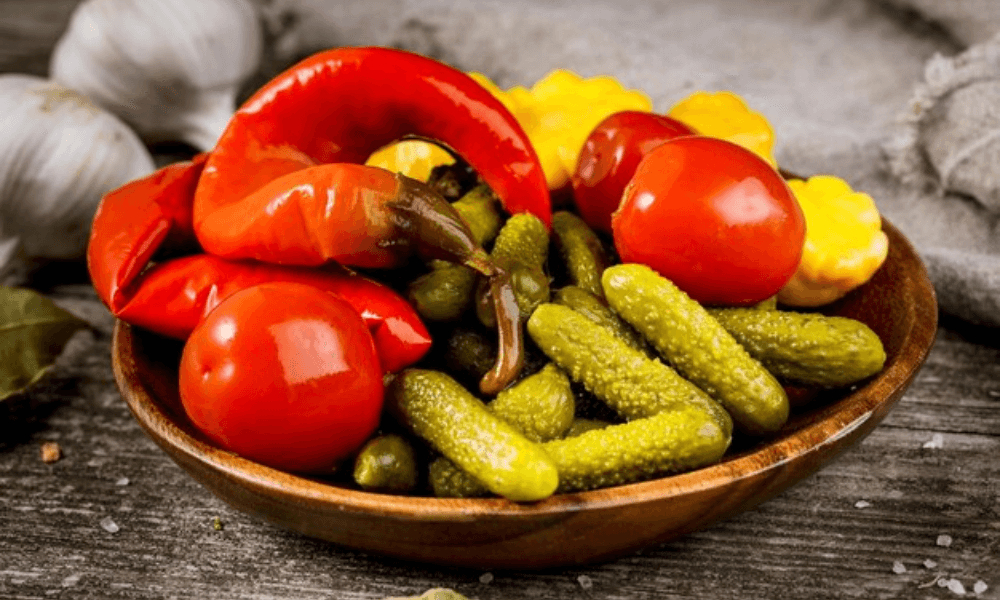
Assorted Pickles as the Main Product of Armenian Cuisine
Armenian cuisine serves as a source of inspiration for many cultures, offering a diverse and flavorful culinary experience. Its rich tapestry of tastes and cooking techniques has influenced various cuisines across the globe. From the heartiness of Armenian stews to the succulence of its kebabs, these dishes have left a lasting impact on culinary traditions worldwide. One standout element in Armenian cuisine is the assortment of pickles, known for their unique tanginess and ability to elevate dishes.
In Armenian cuisine, assorted pickles hold a special place on the dining table. These pickles, known as “ttu” in Armenian, are a medley of pickled vegetables that add a burst of sour, and sometimes spicy flavors to meals.
Pickling is an ancient preservation method that has been practiced for centuries in Armenia and across the world. The process involves immersing vegetables in a brine solution or vinegar, along with herbs, spices, and sometimes sugar, to create a flavorful and long-lasting product. Armenian pickling traditions often include ingredients like cucumbers, cabbage, peppers and more.
Assorted pickles hold a deep-rooted cultural significance in Armenian households. These pickles are cherished not just for their flavors but also for their cultural significance, one aspect of which is their role in maintaining seasonal abundance. Armenia’s agricultural heritage is rich, with summers yielding a bounty of fresh vegetables and fruits. By pickling these seasonal delights, families extend the enjoyment of summer goods throughout the year, ensuring a taste of sunshine even in the colder months.
Furthermore, assorted pickles reflect a connection to the land and a respect for nature’s cycles. Armenian women still gather together to prepare and pickle vegetables, passing down recipes and techniques from one generation to the next. This shared activity fostered a sense of unity and pride in culinary traditions.
Moreover, pickling techniques vary across different regions of Armenia, showcasing the diversity and ingenuity of local communities. Each family may have its secret blend of spices or unique methods for achieving the perfect balance of flavors in their pickles. This diversity adds depth to Armenian cuisine and highlights the importance of preserving cultural heritage through food.
Additionally, pickles feature prominently in traditional Armenian feasts and celebrations. They are often included in festive dishes, adding zesty accents and complementing richer dishes.
While Armenian assorted pickles can be found in markets and specialty stores, making them at home is a rewarding experience. Here are some tips for creating delicious homemade pickles:
Choose Fresh and Firm Vegetables: Select high-quality vegetables that are free from blemishes for the best pickling results.
Sterilize Jars: Ensure your jars are thoroughly cleaned and sterilized before packing them with vegetables and brine.
Experiment with Flavors: Customize your pickles by adding spices like garlic, fennel, coriander or chili to create unique flavor profiles.
Be patient. Allow your pickles to marinate for a while to develop their full flavor.
Store Properly: Once ready, store your homemade pickles in a cool, dark place to preserve their quality.
Visiting Armenian markets and festivals you also visit the world of pickles. From vendors showcasing an array of colourful jars to tasting offerings highlighting different pickling techniques, these gatherings celebrate the art and diversity of Armenian pickle-making process. Popular pickle varieties to explore include pickled cucumbers, pickled cabbage, and pickled eggplants.
The presence of pickles on the Armenian dining table reflects a rich culinary heritage and the art of pickling that has been cherished for centuries. These pickles as a side snack continue to capture the hearts of foreign guests and remain a favorite of locals, making them an essential part of the culinary mosaic of Armenian cuisine.






